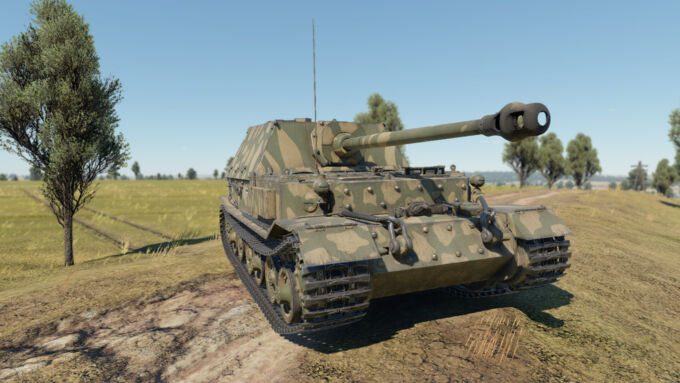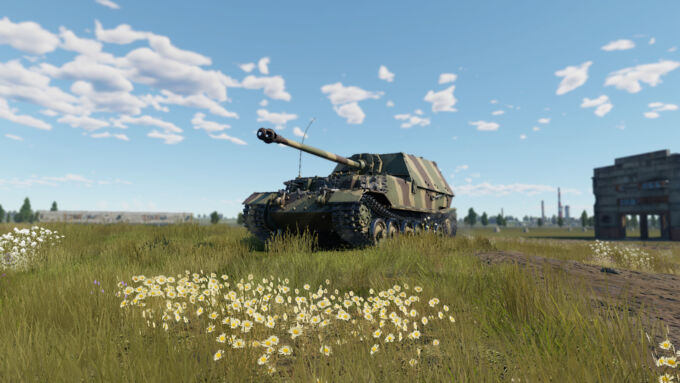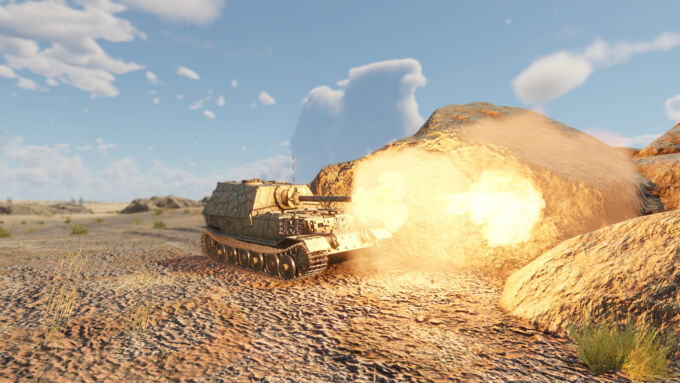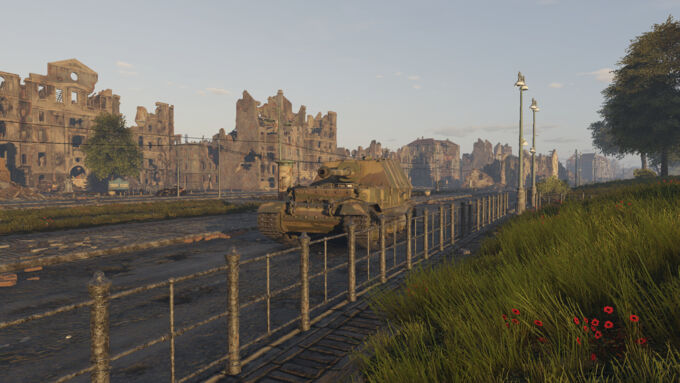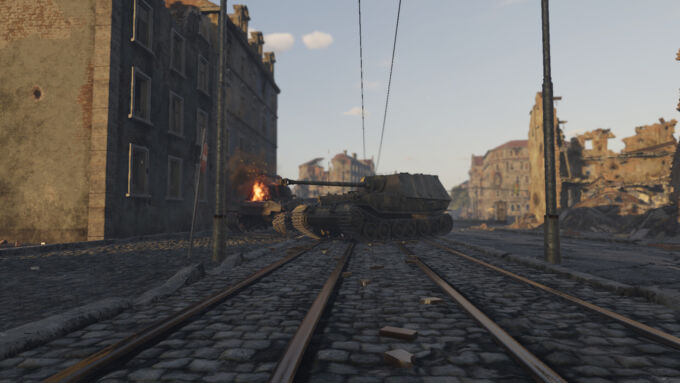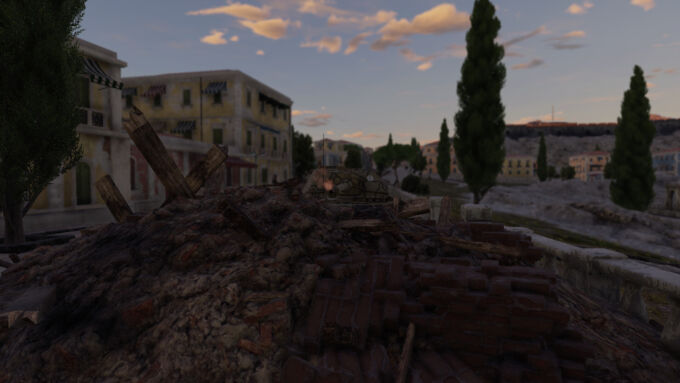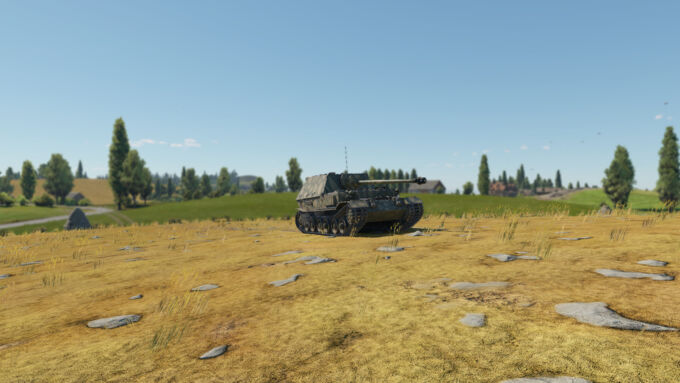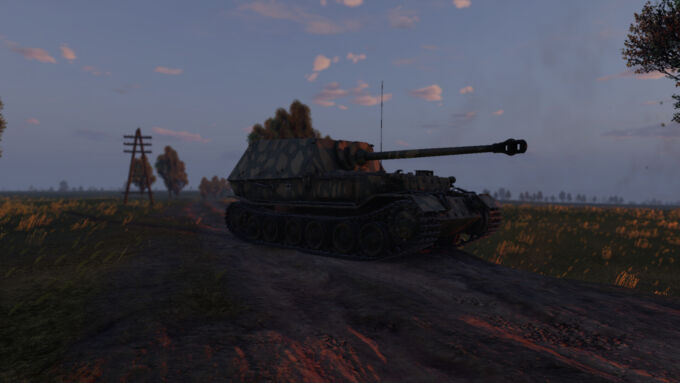The Ferdinand/Elefant are heavy tank destroyers that can both pack a punch and take some hits in return; the Pak 43, often called the 'Long 88' by players, has a quick reload, high penetration and flat ballistics, making it a truly fearsome weapon! The armor on the Ferdinand is also quite thick, albeit unangled, which allows the vehicle to deflect less powerful guns aimed sloppily. The Ferdinand’s mobility is its biggest shortcoming, as its 65-ton weight is too heavy for the underpowered engine to make it a particularly nimble vehicle. The Ferdinand/Elefant excels most at long range, where its advantages in firepower and armor are the most pronounced, and closer range encounters should preferably be avoided given its fairly poor agility and casemate design.
Note: As the Ferdinand and Elefant are functionally near-identical vehicles, this article will from here on out refer to them interchangably for brevity.
1. Armor
The armor of the Ferdinand is quite thick, and is one of the vehicle’s strong points. The front superstructure and hull have an astounding 200mm of armor, although the hull corners, sometimes referred to as the 'cheeks', are vulnerable to penetration if exposed, due to their mere 80mm thickness. The sides and rear of the Ferdinand are also protected by 80mm-thick armor, which can deflect lower-caliber guns most flanking enemies will be equipped with so long as you don’t let them get too close. It is important to note that the driver and MG operator/radio operator sit in the front compartment, separated from the rest of the crew by the engine section. This setup gives the Ferdinand additional survivability, as a penetration through the lower hull might not lead to the loss of the entire crew, but only those two.
Your armor, however, is not invincible and has various counters that come in many shapes and forms. This includes high-powered APDS rounds such as the ones found on many British vehicles, or chemical munitions like HEAT or HEATFS, which are found on a wide variety of vehicles throughout most tech trees. Chemical rounds are not affected by range, and with most of these shells have enough penetration to go through even your superstructure, any tank equipped with these are a major threat to you.
Another, more recent threat is from high-caliber HE rounds from artillery vehicles, which completely bypasses your armor and will overpressure you if they hit you on your hull or superstructure roof, posing a different kind of challenge entirely. Hits to the front superstructure aimed low enough may overpressure into the hull roof, so you should exercise caution in this regard as well.
One very common threat to always keep in mind is the Soviet IS-2, with its large 122mm cannon. Aside from overpressure kills, the BR-471 and BR-471B rounds can be stopped by the upper casemate, although caution should be exercised to hide your 'cheeks' from them as well. The later BR-471D round is capable of penetrating your upper superstructure at close ranges, so exercise caution when facing off against IS-2s in general.
2. Armament
These 'chinks in the armor', however, are compensated well by the Ferdinand’s gun, the Pak 43 88mm also found on the Tiger II and Jagdpanther. The gun has a quick reload (6.7s aced), has a flat shell arc and high penetration, followed up with great post-penetration spalling as well; truly a powerful gun that strikes fear in the hearts of enemies!
The gun’s only shortcomings come from facing vehicles that can resist your 88mm gunfire frontally, such as the IS-4M or T95, but they are both few and far in between and also still vulnerable to specific weakspots if you’re aware of where to shoot. The gun’s large muzzle brake also makes it easier for enemies to hit your barrel, so it is advised to shoot the enemies before they can attempt to disable and flank you.
3. Mobility
The Ferdinand is equipped with a 625 HP engine, which gives the vehicle a HP/t of 9.6 HP/t when fully upgraded. This translates to poor acceleration in live matches, further compounded by the Ferdinand’s 65 ton weight only allowing the vehicle to reach a top speed of 30km/h. However, the Ferdinand has unique upsides as well, namely its electric transmission giving it the same gear ratios and speeds both forwards and in reverse. The vehicle is also capable of neutral steering, allowing it to turn fairly quickly for its weight. However, it is also to be noted that the Ferdinand may turn better with some forwards / backwards momentum, using your speed to 'swing' the vehicle one direction — while not always applicable and not a sustainable way to turn quickly, in a pinch this may help more than just neutral steering!
4. “How-To” Ferdinand
The Ferdinand is a very situational vehicle, so the first thing you should look at when entering a match is checking what hand you’ve been dealt — namely the map and if the match is an uptier or not.
Tank Destroyer SP costs will be 130 / 110 / 100 / 90 SP respectively for +0 / +0.3 / +0.7 / +1.0 BR increments, so if you notice your SP costs are below 100 this would likely indicate you would be fighting enemies above your league. While the Ferdinand can still perform perfectly fine in these situations, it’s always nice to keep track of what you might be facing in the back of your head at all times.
As a heavily armored, lumbering behemoth of a tank destroyer, the Ferdinand is most comfortable when played as a second-line support vehicle. Due to the Ferdinand’s lacking agility in CQC engagements and lack of a turret, being at the frontlines yourself is a risky move, only recommended if you’re confident or are in a full downtier. The Pak 43 is also incredibly effective at longer ranges where other tanks struggle, further amplifying your advantage at these ranges, and your armor holds up much better at range as well!
When being shot at, keep note of the fact that the sides of your hull casemate are lined with shells — any penetration can be fatal, so watch your flanks! The Elefant has a few more saving graces than the Ferdinand in this regard, as its MG port and cupola aren’t consistent weakspots and the additional track armor on the front of the hull can occasionally stop shells from penetrating. A good way to protect yourself more proactively can also be to play 'hull-down', hiding your vulnerable hull cheeks from view using terrain features and only presenting the thickest parts of the casemate to the enemy.
As your armor frontally is quite good, enemies will often try and get on your flanks to shoot your thin side armor. This can also include people shooting out your gun or track (s), to immobilize or cripple you so that they can advance freely, something you are quite vulnerable to due to the large muzzle brake on the Ferdinand. To counter this, it is always best to play around some teammates that can cover your sides and act as cannon fodder/early warning should someone sneak up on you, and playing at longer ranges can give you enough time to repair before the enemy pushes up to your location.
To proactively reduce the chance of enemies penetrating your weakspots, or in the case of high-penetrating guns, the casemate cheeks, you can 'wiggle' your vehicle when on reload to try and force a non-penetration or ricochet, especially against multiple foes. This may, however, also lead to your weakspots (such as your hull corners or sides) being exposed, so if you’re being shot from two or more players more than 90 degrees apart this may not be the best course of action. Wiggling your barrel can also help if you feel that the enemy is trying to shoot your barrel out, and in the case it is shot out you can use your electric transmission to reverse out quickly to repair behind the frontlines.
5. Tips and Tricks
- Preferably stick to longer range sightlines —
your armor is more effective this way, and your gun handles long range
very well. Don’t push out too much unless the situation calls for it, as
your flat armor becomes easier to shoot.
- As the Ferdinand lacks high-caliber MGs or smoke, try not to be rushed down by light tanks or be caught out in an unfavorable position. Check your flanks at all times, and if necessary use the 'sliding turn' technique described earlier to secure a shot on a cheeky flanker.
- Your armor is thick and can let you push aggressively — but beware of two-pronged ambushes and flanking light tanks! Always keep an eye out for high-penetrating APDS/HEATFS equipped vehicles or ATGM carriers, as these can easily bypass your armor!
